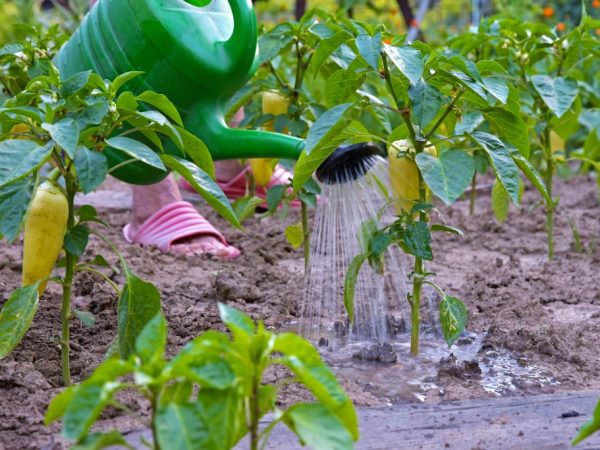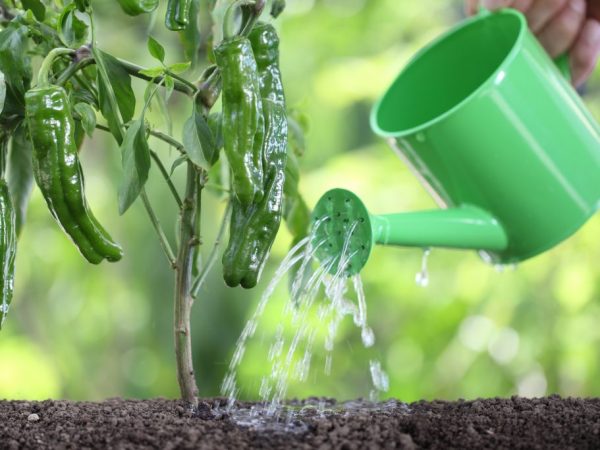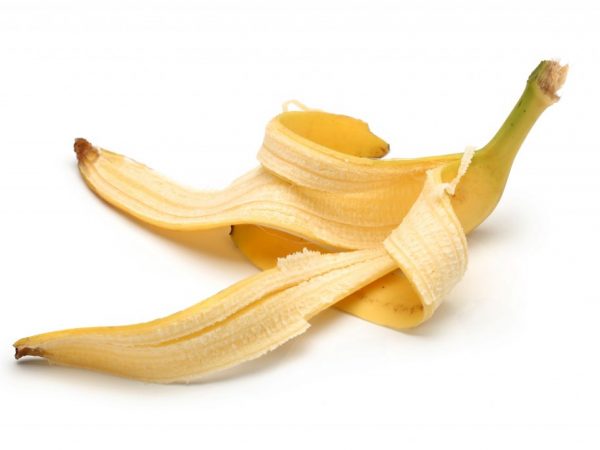How to feed pepper with folk remedies
Pepper is a very demanding culture. An important condition for its cultivation is the stimulation of growth at different stages of plant development. For this purpose, fertilizers are used. Top dressing of pepper with folk remedies is suitable for gardeners who do not want to oversaturate vegetables with chemicals.

Top dressing of pepper with folk remedies
Fertilization rules
To properly feed, you need to know some rules:
- the funds are applied only at the root, they should not fall on the leaves and stems, otherwise they must be washed off with clean water;
- in a cool summer, when the culture does not have enough sunlight, it is necessary to provide it with such an element as potassium;
- it is worth monitoring the amount of funds deposited, an excess of nitrogen leads to a strong build-up of green mass to the detriment of the formation of ovaries;
- for the preparation of solutions, only warm (at least 20˚C) settled water is used;
- fertilizers are applied after watering - this contributes to an even distribution of the product in the ground and prevents burns of sensitive roots;
- types of dressings alternate with each other;
- after using stimulating substances, the soil is loosened.
When and how to feed
Fertilizers for pepper are applied at different stages of cultivation. It is very important to observe the timing of feeding.
Soil preparation
How well the soil mixture is prepared depends on how the plants will feel in the future. Before planting the seed, special attention should be paid to the composition of the soil. Some gardeners buy special mixtures, others cook themselves. To do this, use the following components:
- Earth;
- river sand;
- humus.
All substances are taken in equal proportions. Then fertilize with a small amount of wood ash.
The second time they feed the soil, when they make holes for planting peppers in a permanent place. For this purpose, 1/3 cup of ash is mixed with 0.5 shovels of humus, and added to each hole. Sprinkle abundantly with water.
Top dressing of seedlings
To grow a good harvest, you must first take care of the quality of the seedlings.
After germination, when the plants already have true leaves, fertilization can be applied for the first time. At this stage, substances containing nitrogen and potassium will be useful. Otherwise, the seedlings may become too elongated and frail.
The second feeding is done 2 weeks after the previous one. The composition of substances must also include components with such an element as phosphorus. If humus was added to the soil mixture, then the nitrogen during the second fertilization is superfluous.
Top dressing of adult plants

Top dressing will help plants grow better
If the cultivation of pepper takes place in a greenhouse, then for the first time it is fertilized after two weeks. In the open field - after 15-20 days. During this time, the seedlings will have time to take root and get stronger. Stimulating substances during this period are necessary for enhanced plant growth.
The next feeding is done while the buds are tying.Potassium-containing products will be useful at this stage of development. The third time fertilization is applied after the ripening of the first fruits. They are collected and then folk remedies are used.
What to feed
There are many organic substances that contain the elements necessary for sweet peppers. The culture especially needs nitrogen, potassium and phosphorus.
Bird droppings
The product is a good source of nitrogen. It is used as part of an infusion, which is prepared as follows: add 2 parts of water to 1 part of the substance, mix and leave for 2-3 days for fermentation. Before use, dilute with water in a ratio of 1:10. Feeding with poultry droppings is effective in the early stages of seedling development, as well as for adult plants in order to build tops.
Wood ash
Ashes are used for pepper as a source of potassium and phosphorus. In addition to them, ash contains many other useful micro and macro elements. An organic product is obtained by burning wood, plant residues, tops, weeds. Do not allow debris, plastic, polyethylene to get into it.
The following infusion is prepared on the basis of ash:
- 1 tbsp. l. substances;
- 2 liters of hot water;
- insist day;
- filter before use.
Wood ash contributes to the strengthening and development of culture. The fruits taste good.
Nettle
Used as a growth stimulant for seedlings in the form of an infusion, which is prepared in this way:
- 100 g of dried leaves are placed in a three-liter jar;
- pour water at room temperature to the level of the vessel's shoulders;
- leave warm;
- when fermentation begins, cover the neck with plastic wrap and fix it.
Insist for two weeks. Shake every day 2 times. The finished concentrate is diluted with water in a 1: 2 ratio and 2 tbsp. l. wood ash. The fertilizer smells like fresh manure. Can be stored for 2 months in a cool, dark place.
Banana skin

Banana peel can be used for infusion
With the help of this substance, the earth is saturated with potassium, with a shortage of which nitrogen is poorly absorbed. You can fertilize the pepper using this tool: 2-3 peels are poured with water in a three-liter jar, insisted for 3 days. During this time, the liquid will be saturated with potassium. You can also dry the skin, crush it into powder, and apply it as such to the soil.
Eggshell
Means prepared on the basis of the substance have a whole complex of vitamins. You can feed the culture with this infusion:
- shell of 3 eggs;
- 3 liters of warm water;
- cover with a loose lid;
- leave for 3 days.
The readiness of the liquid for use is determined by the cloudiness of the water. The solution takes on an unpleasant odor.
Onion peel
Provides plants with many elements, and also has disinfecting characteristics. An infusion of this substance is used as a fertilizer. It is prepared like this:
- 20 g onion husks;
- 4 liters of water;
- insist 4 days:
- filter before use.
Iodine
The tool provides great benefits for peppers: it stimulates growth, increases productivity, and improves the taste of fruits. Also has antiseptic properties. The following fertilizer is prepared on the basis of the substance:
- 1-2 drops of iodine;
- 1 liter of water;
- 100 ml of milk whey.
Yeast
They are a source of phosphorus, nitrogen and other useful elements. Yeast stimulates crop growth, activates metabolic processes in the soil, promotes the development of a strong root system, and increases productivity. You can feed the plants with this tool:
- 1 g dry or 50 g fresh yeast;
- 1 liter of warm water;
- 1 tsp Sahara.
Before using the solution, it is diluted with 5 liters of warm water. Apply no more than 2 times per season.
Green mash
For feeding, use nettle, dandelion, wormwood, millennial, tomato tops. Products made with these herbs have an unpleasant odor. The following infusion has a good effect:
- grass without seeds is placed in a barrel by 1/6 of its volume;
- pour warm water almost to the top;
- insist in a warm place for up to 7 days.
Before use, it is worth diluting in this way: 1 liter of concentrate is taken for 1 bucket of water.
Conclusion
Folk remedies in pepper feeding are widely used. They provide the culture with the necessary substances during the growing season of seedlings, as well as during the growing season. It is worth observing the condition of the plants in order to understand what elements they require.
Do not oversaturate the soil with fertilizers, as this can harm the vegetable. Considering the timing of top dressing, and following all the rules, you can achieve high yields.


